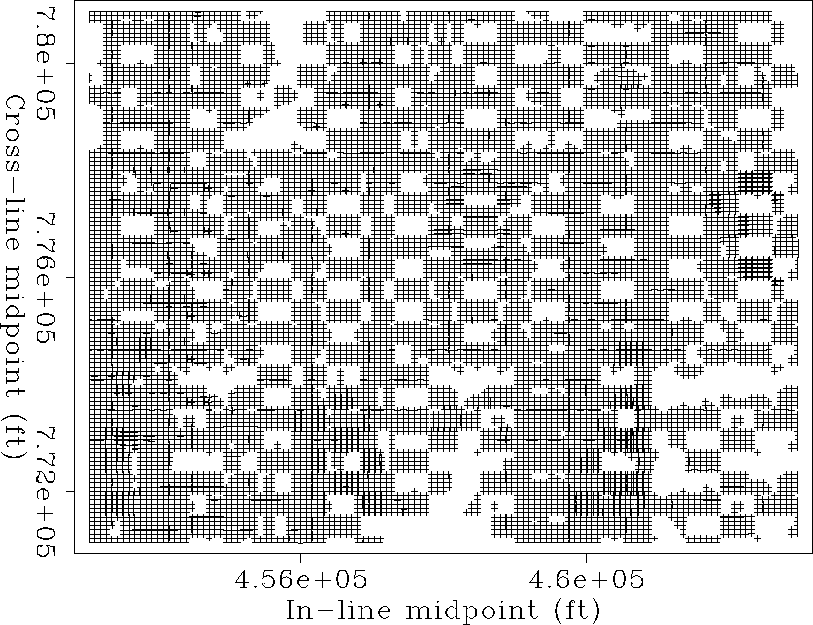




Next: Normalization for variable fold
Up: IRREGULAR SPATIAL SAMPLING
Previous: IRREGULAR SPATIAL SAMPLING
It is difficult to acquire seismic data that is adequately
distributed in azimuth and offset. Moreover, it is impossible to
extract an adequately sampled
3D subset representing
a single common-azimuth common-offset realization
from the 5D prestack volume. An alternative solution is to consider
a subset over a small
range of azimuths and offsets for prestack
processing.
An example of such a subset from a 3D wide-azimuth
data volume is shown in Figure
2. Traces whose source-receiver offset is between 7000
and 9000 ft and azimuth between -30o and 30o were extracted
from a true 3D land survey acquired with Button-Patch geometry
and we plotted the surface locations of their common
mid-points.
There is a fundamental problem with
this subset. At a nominal bin size spacing, variations in fold between
different bins may vary substantially.
Figure 3 shows the fold distribution for this subset binned
at nominal CMP spacing of 80 ft. The fold coverage varies from 0 to 5
with arithmetic average of about 1.5.
survey
Figure 1 Layout of the sources and receivers in the 3D land survey designed with a Button-Patch geometry; the dots and stars indicate receiver and source locations respectively.




 irregular
irregular
Figure 2 CMP geometry of a subset from a wide azimuth 3D land survey. The corresponding traces have source-receiver azimuth between -30 and 30 dgrees and offset between 7000 and 9000 ft.




 Fold
Fold
Figure 3 Fold diagram for the 3-D subset binned at nominal CMP spacing of 80 ft.










Next: Normalization for variable fold
Up: IRREGULAR SPATIAL SAMPLING
Previous: IRREGULAR SPATIAL SAMPLING
Stanford Exploration Project
11/11/1997



